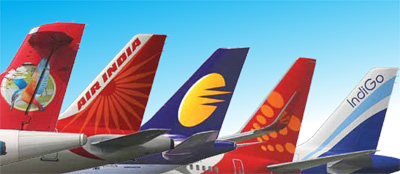Air Fares Spiraling

The issues concerning transparency and fairness in determining air fares, regulatory provisions and the role of the government have all finally come into the public domain
Launched in August 2003 by Captain G.R. Gopinath, it was Air Deccan with its low-cost business model, that seriously threatened the stranglehold of the state-owned airlines as also the full service carriers in the private sector Jet Airways and Air Sahara had on the fare structure. Any kind of regulatory control or oversight on the fares charged by airlines was unknown to the travellers. It really did not matter as air travel was the exclusive privilege of the elite and the affluent—for them the price of an air ticket was of little consequence. Air fare structure, therefore, was not an issue of public interest. For a large segment of the middle class, air travel was an unaffordable luxury to be undertaken only in an emergency or under special circumstances. Air Deccan changed all that as its arrival on the scene was followed by a sizeable migration from rail to air travel by sections of the middle class lured by rock bottom, unrealistic and unbelievable air fares that gave even the surface transport systems in India a run for their money.
Driven by the boom in the airline industry that began in 2004, a number of airlines mushroomed in India with the total number going up to 11. Some of the new players to emerge on the scene inspired by Air Deccan experience were SpiceJet, GoAir and IndiGo, all founded on the low-cost concept. In the emerging competitive environment with supply outstripping demand, the full service carriers could no longer afford to be complacent. Desperate to prevent erosion of their market share they were compelled to keep the fares low. While the travelling public benefitted immensely, airlines began to incur losses but continued to operate with the hope of breaking even in three to four years time. Financially, the state-owned airlines were worse off, their plight further aggravated by the malaise associated with most public sector enterprises. Privately operated full service carriers such as Kingfisher Airlines, Jet Airways and Air Sahara too suffered the onslaught of unbridled competition but managed to continue operations with the support of their sponsors or their own sources of funding. However, one airline closed down and consequent to mergers, the total number of airlines reduced to seven.
But the struggling airline industry in India received a devastating blow by the global economic meltdown of 2008. The steep decline in the demand for air travel was catastrophic for the airlines that now faced an unprecedented crisis that threatened their very survival. In the face of falling demand, as air fares plummeted, the travelling public rejoiced, but airlines sank further into the red. While Air India received a hefty bailout package from the government, despite fervent pleas, the private carriers in distress received no relief whatsoever from the government.





